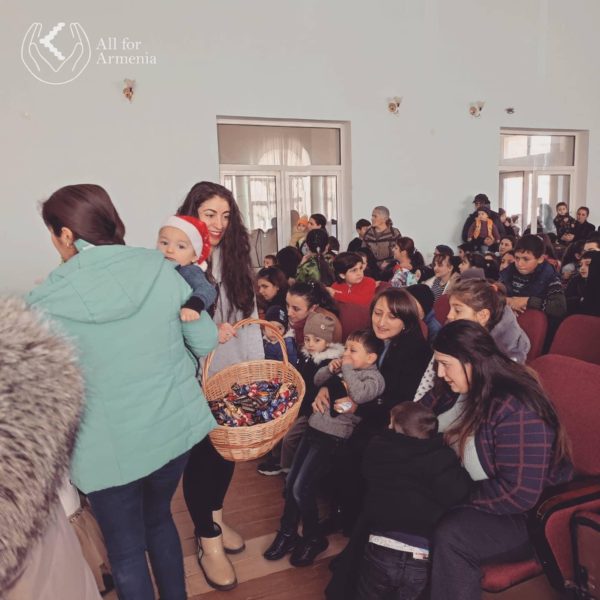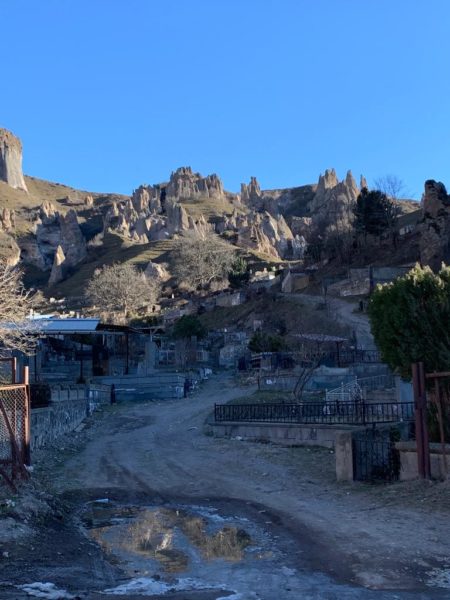YEREVAN — Christmas morning, 8 a.m. I grab my backpack and scurry through the empty streets of Yerevan to the Birthright Armenia office in Republic Square.
There, I meet up with Matthieu Sahakian, a French repat and co-founder of the All for Armenia (AfA) non-profit organization. He had organized a Christmas gift-wrapping event the previous day and graciously entertained my appeal to join the AfA team on their mission to deliver these presents in Goris. Matthieu and his wife Araz founded AfA at the start of the 2020 Artsakh War to assist refugees. Since then, the organization has focused on providing the native Armenian communities of Syunik and Artsakh with the necessary resources to forge a long-term livelihood.

While we transport bags of presents to the van, Matthieu introduces me to the rest of the team: Saro Yesayan, an Australian repat who had been a fellow Birthright volunteer with Matthieu in 2017 and has hosted first-aid courses with AfA in Goris; Hovhannes Verdyan, a veteran of the 44-Day War and self-taught freelance programmer; and Dr. Carlos Ketzoian, a preeminent neurologist from Uruguay who sponsored the trip. My fellow tag-along traveler is Shushan Hovhannisyan, Birthright Armenia’s public relations specialist.

I observe the AfA team launch a game of real-life Tetris as they struggle to stuff Christmas gifts for 140 children into every open crevice of our small van. We finally succeed in striking a precarious balance, and off we go on the 5-hour journey to Syunik Province.
Along the way, we are treated to a crystal-clear view of Mount Ararat, its peaks rising majestically above the cliff at our feet. We drive past the village of Tigranashen, one of three former Soviet Azerbaijani enclaves, located in the Ararat region and populated entirely by Armenians. Several hours later, we reach our first stop in Goris, a city hugging Armenia’s southeastern border with Azerbaijan.
The best way to experience a new locale is on foot. While half of our group enjoys a well-deserved nap, Saro and I leave the hotel to explore the Old Town, with its distinct architectural influences unique to Syunik and Artsakh: two-story houses with arched gates and cobblestone walls. Due to their proximity, the historical dynasty of Siunia (Syunik) and Kingdom of Artsakh frequently fused to repel invaders and thereby developed a characteristic architectural style.

















